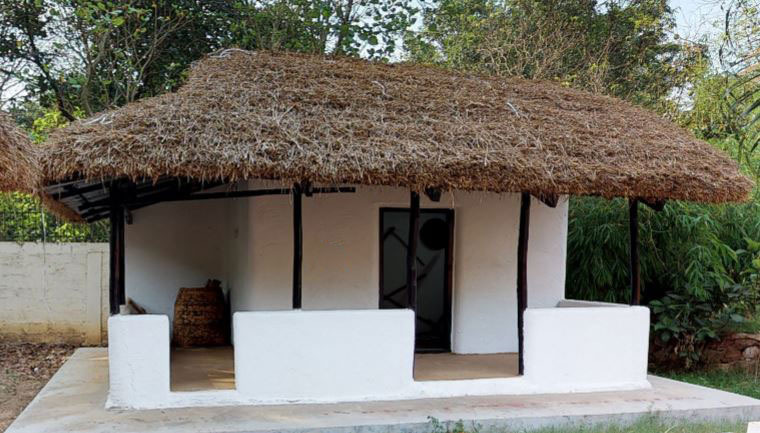Bhunjia on:
[Wikipedia]
[Google]
[Amazon]
Bhunjias, are an ethnic group found in India mainly reside in Sunabeda plateau in Odisha and Chhattisgarh. They are mostly found in 
Nuapada
Nuapada is a town in western region of Odisha state of eastern India. It is the headquarter of Nuapada district. Nuapada district was carved out of the undivided Kalahandi district on 27 March 1993. It is on the western border of Odisha with C ...
district, which is roughly between 22° 55′ N and 21° 30′ N latitude and 82° 35′ E longitude. It was a part of Khariar Zamindari, which formed the eastern and the southeastern region of Raipur district
Raipur district is a district in the Chhattisgarh state of India. Its administrative headquarters is the city of Raipur. The district is rich in mineral resources and there are many wildlife sanctuaries. With a population of 2 million, it is the ...
of Chhattisgarh division in Central Province till 1 April 1936, when it was transferred to Odisha
Odisha (), formerly Orissa (List of renamed places in India, the official name until 2011), is a States and union territories of India, state located in East India, Eastern India. It is the List of states and union territories of India by ar ...
on its creation. It is now in Komna block of Nuapada district in Orissa. In Chhattisgarh they are found in Raipur district.

History and origin myths
Culture
Bhunjias are divided into two main sections i.e. Chinda Bhunjia and Chaukhutia Bhunjia. The Chaukhutia Bhunjia are confined exclusively to the hills of the Sunabeda plateau in ecologically secluded areas for which they maintain distance from the outsiders. But the Chinda Bhunjia generally lives in the plains and have close contact with the tribal and non-tribal communities. The religious life of Bhunjia is very simple. They believe in many Gods and Goddesses who are worshipped in different months on different ritual occasions. Their major festivals are Dussehra, Chaval Dhona, Naya Khana. They practice monogamous marriage. Most prevalent methods of marriage are by exchange and elopement among others. They also practice levirate and sororate types of marriage. Bride price practice is not prevalent among them.Bhunjia Oral Tradition
The rich folklore of Bhunjia community has been documented by Dr Mahendra Kumar Mishra in his seminal book Oral Epics of Kalahandi 2007. The songs and tales, the myth of Goddess Sunadi, origin of paddy from Sunabeda, Bhujia myth of Origin are narrated in his book. Besides Surendra Kumar Mishra from Sinapali has written a book on Bhunjia Sanskruti which has been published by the academy of tribal language and culture, Bhubaneswar. The most important is their epic songs of Allah Udal, Tulsi beer, Mandhar MAjhi and life of Goddess Sunadi are some of the important narratives the Bhunjia singers, priests and Gurumai sing.Language
Bhunjia speakers belong to the Indo-Aryan language family as they speak Bhunjia, part of theHalbic languages
The Halbic languages belong to the eastern branch of the Indo-Aryan languages and are mainly spoken in southern Chhattisgarh in India
India, officially the Republic of India, is a country in South Asia. It is the List of countries and ...
, which is considered a mixture of Odia, Marathi
Marathi may refer to:
*Marathi people, an Indo-Aryan ethnolinguistic group of Maharashtra, India
**Marathi people (Uttar Pradesh), the Marathi people in the Indian state of Uttar Pradesh
*Marathi language, the Indo-Aryan language spoken by the Mar ...
and Chhattisgarhi
Chhattisgarhi () is an Indo-Aryan language spoken by approximately 16.25 million people from Chhattisgarh, Odisha, Madhya Pradesh and Maharashtra in India. It is the official language of Chhattisgarh. It is grouped within the Eastern Hindi lan ...
. However, S.C. Dubey, analyzing the myth and oral tradition
Oral tradition, or oral lore, is a form of human communication in which knowledge, art, ideas and culture are received, preserved, and transmitted orally from one generation to another.Jan Vansina, Vansina, Jan: ''Oral Tradition as History'' (19 ...
of Chhattisgarh, considers the Bhunjia as a branch of Halbas of Baster, who fled from Baster due to their quarrel with Dhakars.
References
{{Authority control Odia culture Social groups of Odisha